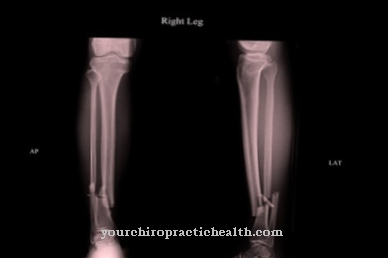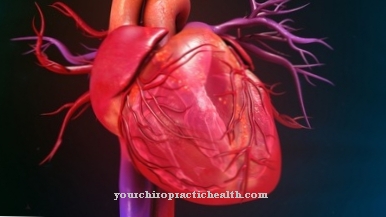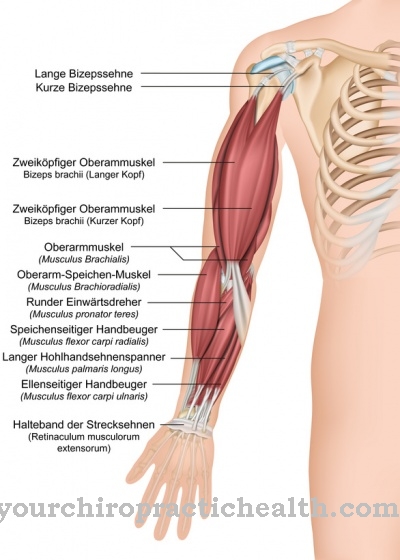The To grab is an automated movement pattern that is planned in the motor cortex of the brain. From there, the movement plan for grasping is passed on to the voluntary muscles via the pyramidal trajectories of the brain. A disturbed grasping movement can indicate neurodegenerative diseases.
What is grasping?

To grasp, a person actively closes their hand around something near their own body. During this process, the brain plans, realizes and controls a targeted and usually arbitrary hand movement with the participation of the fingers. All grasping movements are so-called precision movements and thus belong to fine motor skills.
Grasping can be done consciously as well as unconsciously. An unconscious type is, for example, reflex movements. An unconscious grasping reflex can also be observed in newborns. Even in the womb, the fetus is given the necessary prerequisites to carry out grasping movements. Only children over a year of age reach for things in their environment with precision and good timing.
Various anatomical structures are involved in gripping movements. In addition to the muscles of the arm and hand, the spinal cord tracts and various areas of the brain are particularly involved in grasping. In addition to the motor cortex for voluntary movements, the perception system in the brain for grasping movements also plays a role. For example, the planning of grasping is related to visual and spatial perception.
Function & task
Every day, people purposefully reach for things a few dozen to a few hundred times. The automation of the gripping movement begins in early childhood. Gripping is incorporated into comprehensive action patterns that are stored in the brain and can then be called up automatically. For example, people reach for a glass, bring it to their mouth and tip it up to be able to drink. Since this sequence of movements takes place several times a day, it is automated by the brain. As a result, the person no longer has to concentrate on the individual movements or explicitly and consciously give the individual movements in thought. In view of the frequency with which people reach for something, this automation is an important protection against overload.
The combination of movement patterns from simple and individual movements takes place in the motor cortex, which makes up part of the cerebral cortex. This rear zone of the frontal lobe forms the overlaid control system for the pyramidal tracts of the spine. The central eye field also ends in this brain area, as it plays an important role in movement planning.
Movement sequences are planned and automated in the motor cortex. In the pyramidal trajectories, the movement plans of the motor cortex are finally switched over via a complex switching system and from here they reach the voluntary muscles. The extensor and flexor muscles in particular are involved in grasping movements.
As young as two months old, infants can reach out for something. At this point, however, they cannot yet grasp, because the extension of the arm is not yet linked to the opening and closing of the hand. After the first attempts at grasping, patterns of innervation in the spinal cord establish themselves. These patterns develop into variable and self-organizing systems of motor skills, which from then on are practiced further and become more and more secure.
Even before an infant is six months old, it reaches for objects with open hands, but the grasping movement is still more or less chaotic. From then on, higher levels of the central nervous system are continuously included in the grasping movement. From then on, specialized innervation programs develop for variable external conditions, which become more and more stable in the further course and can be executed more and more automatically.
You can find your medication here
➔ Medicines for painIllnesses & ailments
Precision movements such as grasping are disturbed in various neurodegenerative diseases. Parkinson's is an example of this. Targeted and voluntary grasping movements can be carried out less and less in the course of Parkinson's. Including the planning and final control of the gripping process, the motocortex of a healthy patient needs around 800 milliseconds to grasp. Even in the early stages of Parkinson's, the values for those affected are well above these numbers.
A cerebral infarction can also make grasping impossible. Most lesions of the motor cortex, which is responsible for fine motor planning and implementation, occur as a result of a cerebral infarction with vascular occlusion in the middle cerebral artery. Lesions of the motor cortex can thus make gripping difficult, prevent or disrupt automated movement patterns. Paralysis or ataxia are therefore common symptoms of cerebral infarction. Under certain circumstances, grasping can be re-trained after a cerebral infarction. In the event of a stroke, the tissue around the damaged area can, for example, take over the tasks of the defective areas through targeted training.
Diseases such as multiple sclerosis can also deautomatize or paralyze the grasping movement. Not only inflammation in the brain, but also inflammation in the pyramidal tracts can damage the motor system in the context of multiple sclerosis. Inaccurate and powerless grasping movements can be an early sign of current inflammation in the corresponding areas. For example, if people drop things more often than usual or if objects are regularly missed when grasping, this is sometimes interpreted as a subtle indication of a possible MS diagnosis.









.jpg)



.jpg)



.jpg)







.jpg)


